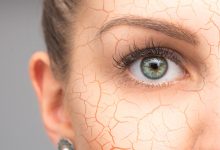Rain Rot in Horses: A Comprehensive Guide to Prevention, Diagnosis, and Treatment

Rain rot, also known as rain scald or dermatophilosis, is a bacterial skin infection that plagues horses, particularly during periods of wet and humid weather. While not a life-threatening condition, rain rot can cause significant discomfort, affect a horse’s appearance, and even lead to secondary infections if left untreated. This in-depth guide delves into the complexities of rain rot horses empowering you with the knowledge to prevent, diagnose, and effectively manage this common equine ailment.
Unveiling the Culprit: Demystifying Dermatophilus Congolensis
The culprit behind rain rot is a bacterium called Dermatophilus congolensis. This opportunistic pathogen resides on a horse’s skin, existing in a dormant state under dry conditions. However, when exposed to prolonged moisture, warmth, and unsanitary environments, Dermatophilus congolensis undergoes a transformation. It becomes an active pathogen, breaching the skin’s natural defenses and triggering an inflammatory infection.
A Multifaceted Threat: Factors Contributing to Rain Rot Development
Several factors contribute to the development of rain rot in horses. Understanding these factors empowers you to create a more comprehensive preventative strategy. Here are the key culprits to watch out for:
- Moisture Mania: Excessive moisture exposure, whether from rain, sweat, or damp environments, provides the ideal breeding ground for Dermatophilus congolensis. Horses with inadequate shelter during wet weather, those residing in humid regions, or horses prone to excessive sweating due to heavy workloads are particularly susceptible.
- Compromised Defenses: Cuts, scrapes, insect bites, or sunburn can create openings in the skin, acting as gateways for bacteria to gain easier entry and establish an infection. Regularly inspecting your horse’s skin for any potential breaches is crucial for early detection and intervention.
- Hygiene Hiccups: A dirty coat matted with mud or debris can trap moisture and create a breeding ground for bacteria. Regular grooming and proper hygiene practices are essential for preventing rain rot. Brushing your horse daily removes dirt and debris, allowing the skin to breathe and reducing the risk of bacterial growth.
- Immune System Imbalances: Horses experiencing stress, malnutrition, or underlying health conditions may have a weakened immune system, making them more vulnerable to bacterial infections like rain rot. Ensuring your horse receives a balanced diet rich in essential nutrients and maintaining a regular deworming schedule are crucial for a robust immune system.
- Blanket Blunders: Using a poorly ventilated blanket can trap moisture against the horse’s skin, mimicking the effects of constant rain and creating a favorable environment for bacterial growth. Opt for breathable blankets that allow for proper airflow and moisture wicking.
Recognizing the Signs: Early Detection of Rain Rot
A keen eye can readily identify rain rot in its early stages. Early detection allows for prompt intervention and a faster recovery for your horse. Here are the signs to watch out for:
- Crusting and Scabbing: The initial sign of rain rot is the formation of crusty scabs along the back, rump, shoulders, or flanks. These scabs may appear raised, yellow, or brown and often mat together with the horse’s hair.
- Hair Loss: As the infection progresses, the scabs detach, revealing patches of hair loss. The affected areas may appear raw, red, and irritated.
- Tenderness: Rain rot can cause discomfort and sensitivity in the affected areas. The horse may flinch or react when touched in these regions. Pay close attention to your horse’s behavior during grooming sessions.
- Lesions and Pus: In severe cases, the scabs may become thick and infected, oozing pus. This indicates a deeper infection requiring immediate veterinary attention. Early intervention is key to preventing complications and ensuring a swifter recovery.
Beyond Rain Rot: Differentiating from Other Skin Conditions
Several other skin conditions can mimic rain rot’s symptoms. Here’s a breakdown to help you differentiate them:
- Ringworm: This fungal infection often appears as circular patches of hair loss with a raised, red border. Unlike rain rot, ringworm is highly contagious. If you suspect ringworm, immediate isolation and veterinary attention are crucial for preventing the spread to other horses.
- Lice and Mites: These parasites cause intense itching and hair loss. Look for live lice or mites crawling on the horse’s skin and signs of excessive scratching. Implementing a proper deworming program and using parasite control medications are essential for eliminating these pests.
- Urticaria (Hives): This allergic reaction causes raised, itchy welts that appear and disappear quickly. Unlike rain rot, hives are not associated with scabbing or hair loss. Identifying the allergen and addressing the source of the allergy is crucial for managing hives.
Conclusion: Conquering Rain Rot and Keeping Your Horse Healthy
Rain rot, while a prevalent concern, is a manageable condition with proper knowledge and proactive measures. By implementing the preventative strategies outlined above, maintaining a vigilant eye for early signs, and seeking veterinary attention when necessary, you can effectively safeguard your horse’s health and well-being. Remember, early intervention is key to a swift and successful recovery from rain rot.









